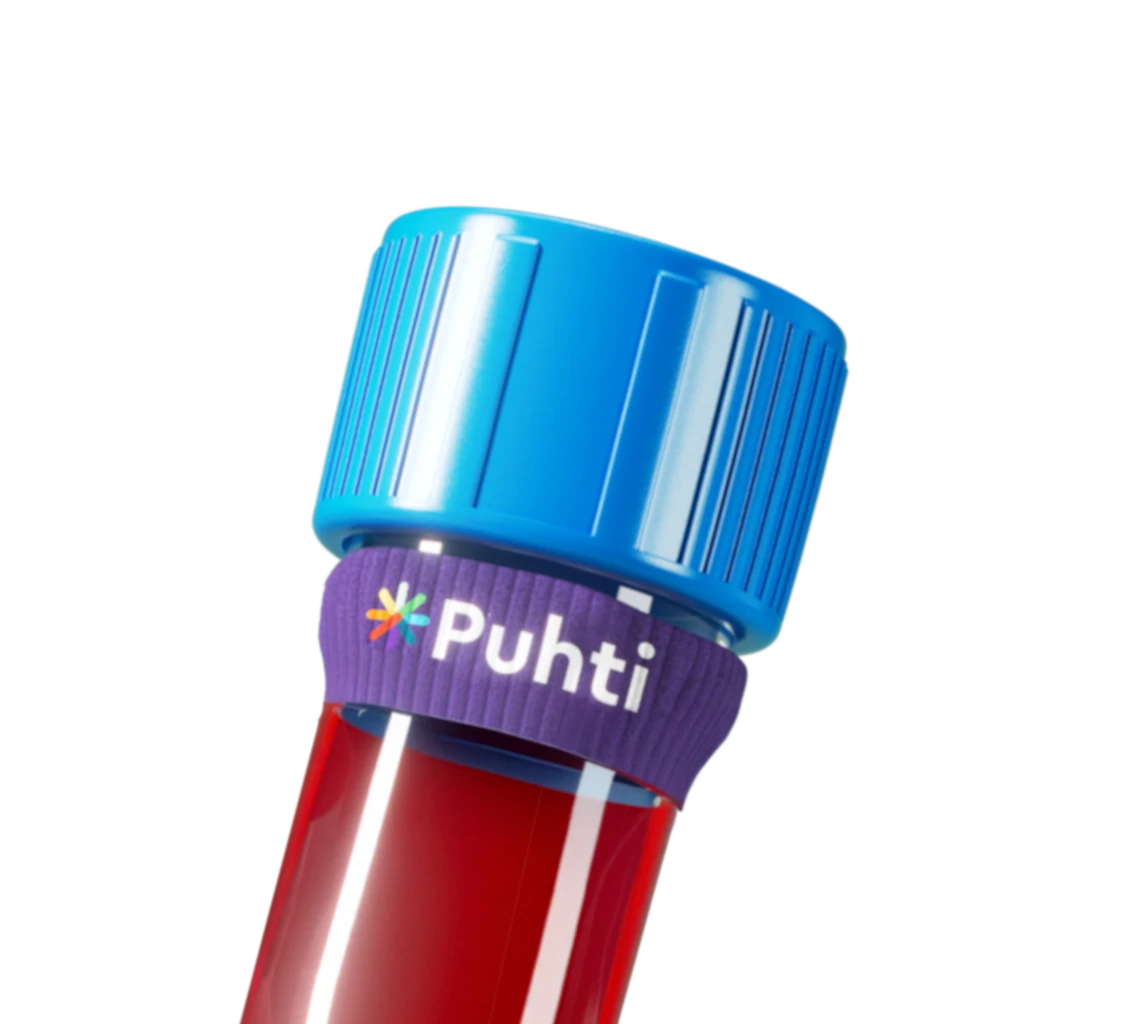
LDL is a “bad” cholesterol
The LDL cholesterol level shows the amount of harmful cholesterol in the blood.

LDL is a “bad” cholesterol
The LDL cholesterol level shows the amount of harmful cholesterol in the blood.
LDL cholesterol
- Excess LDL cholesterol begins to build up in the artery walls because the cholesterol circulation in the artery wall gets weaker.
- Regular blood tests will help to identify elevated cholesterol levels, enabling appropriate treatment.
- Most common cause of high cholesterol (LDL) is a diet excessively rich in saturated fats.
What is LDL cholesterol?
LDL, or low-density lipoproteins, transport the majority of blood cholesterol and help cholesterol travel from the bloodstream to tissues. Excess cholesterol remains in the bloodstream and can accumulate in the walls of arteries, narrowing them. This type of cholesterol is also referred to as “bad” cholesterol.
The higher the amount of bad cholesterol in the blood, the more plaque typically forms on the walls of blood vessels. Therefore, the concentration of bad cholesterol usually better reflects the risk of developing cardiovascular disease than total cholesterol.
How can I get my LDL cholesterol tested?
Check out Puhti laboratory packages which include cholesterol measurement. LDL test is part of the total cholesterol measurement.
Cholesterol measurement is included in the following test packages:
- Puhti laboratory package
- Extensive Puhti laboratory package women
- Extensive Puhti laboratory package men
Through Puhti, you can also easily book a remote appointment with a doctor as a separate service, during which you can go through all the results.
If Trigly is above 4.5 mmol/L, the LDL result is not reported. In that case, the non-HDL value is a good reflection of the amount of bad cholesterol.
Why is LDL cholesterol harmful?
Over time, LDL cholesterol can build up in the artery walls. The build-up accumulates monocyte white cells. They are activated and transformed into macrophages, or phagocytes that are responsible for removing cholesterol from the artery walls. Good cholesterol (HDL) aims to remove cholesterol from macrophages back into the bloodstream and out of the body.
Excess LDL cholesterol begins to build up in the artery walls because the cholesterol circulation in the artery wall gets weaker. Extracellular cholesterol released by dying macrophages gradually appears on the artery wall. The cholesterol build-up condenses and grows outward and an atheromatous plaque is formed.
The atheromatous plaque gradually begins to narrow the blood vessel. Excess cholesterol can accumulate in any artery. Particularly during exercise, impaired blood flow due to the obstruction prevents the free flow of blood. The area in question suffers from a lack of blood flow, leading to a lack of oxygen. Lack of oxygen due to lack of blood flow manifests itself as pain either at rest or during exercise.
The surface of the atheromatous plaque may also suddenly rupture, resulting in a blood clot. The blood clot blocks the artery in question and prevents blood, oxygen, and glucose from entering the artery area, causing tissue death or an infarction.
Recommended values for LDL cholesterol
Recommended value is under 3 mmol/L.
Why is LDL cholesterol measured?
LDL cholesterol is part of the total cholesterol measurement. It measures the amount of harmful LDL (low density lipoprotein) cholesterol in the blood.
Therefore, the concentration of bad cholesterol usually better reflects the risk of developing cardiovascular disease than total cholesterol.
Regular blood tests will help to identify elevated cholesterol, enabling appropriate treatment.
Adult’s total cholesterol should ideally be measured at least every five years. Values are typically measured more frequently if:
- person has diabetes
- there is a family history of cardiovascular diseasse
- person has poor cholesterol levels
- there have been changes in the person’s hormonal function
- person smokes.
If a person is found to have elevated cholesterol known as hypercholesterolemia, medication is initiated and self-care is intensified. Cholesterol levels are usually measured approximately one month after starting treatment. Values are checked about once a year once hypercholesterolemia treatment is established.
High LDL cholesterol levels
Many factors can affect LDL cholesterol levels. Typically, high LDL cholesterol levels are caused by unhealthy habits that can be detrimental to health, including:
- smoking
- lack of exercise
- diet high in fat and cholesterol-raising foods
- vitamin B12 deficiency
- hypothyroidism
In addition, certain medications can raise LDL cholesterol levels, including:
- anabolic steroids
- beta-blockers
- growth hormone
- hormone replacement therapy
- corticosteroids
- diuretics
How can you reduce LDL cholesterol?
Most common cause of high cholesterol (LDL) is a diet excessively rich in saturated fats. Avoiding hard fats, exercising and avoiding excess weight can affect the quantity and quality of total cholesterol in the body. Opt for soft vegetal fats. Elevated cholesterol is also associated with factors beyond our control. These include age, gender, and genetic predisposition.
Recommended fat intake for an adult is 25–40% of the total energy intake, with an average of about 60 grammes per day. Therefore, there is no reason to completely avoid fats, but the quality of the fats affects the amount of cholesterol in the body. Hard fats should account for no more than one third of the recommended daily intake, compared to two thirds of soft fats.
LDL cholesterol is increased by hard fats in food and, correspondingly, reduced by unsaturated or soft fats. Hard fats include fatty meats, ultra-processed foods, biscuits and unhealthy snacks.
Opt for whole grains, fruits, vegetables, seeds and nuts in your diet.
Remember to also exercise regularly, at least 30 minutes a day several times a week. Exercise lowers the amount of LDL cholesterol in the blood and raises HDL cholesterol. In addition, exercise is an important part of weight management as abdominal obesity raises cholesterol.
Cholesterol drugs, for exmple statins, can effectively reduce the amount of LDL cholesterol in the blood.







